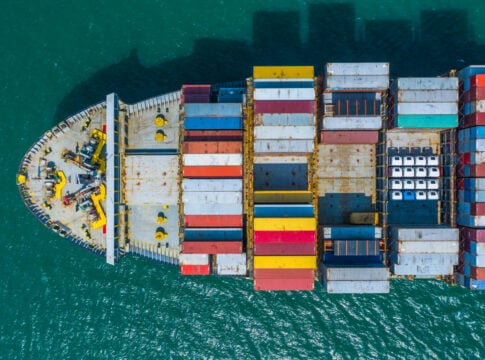Capesize
The Capesize market endured another week of frustrating troughs as rates languished at near historical lows. Monday’s Baltic Capesize Index (BCI) route 5TC posted an index down -145 to settle at $4,035 and by Friday finished at $3,796. The beginning of the week had the Pacific market enveloped, with news of category four Cyclone Veronica. While the worst was over by Tuesday, reports of Rio Tinto declaring force majeure on Friday circulated for several Port Walcott berths. This marked an ongoing recent string of bad news events distressing the Capesize market. The routes of Saldanha Bay and Tubarao to Qingdao ended the week lifting slightly, with the ballaster fleet on these routes remaining thin and prone to positional pressure. The Atlantic basin bore consecutive drops in value as minimal volume traded. Transatlantic dollar per tonne rates often corresponded to negative timecharter equivalents, this put pressure on the C8 timecharter route. The C8 dropped by $1,205 to settle Friday at $3,195, leaving owners questioning the Atlantic basins viable economics in this market. Period fixtures were said to be increasing this week, illustrated by Rio Tinto fixing the ‘Cotswold’ (179,611dwt, 2016) for 11-14 months, delivery Taicang 6 April, at $15,250.
Panamax
The Atlantic saw a spike in rates last week for transatlantic trades. The index rose around $1,000 on Thursday, with Kamsarmaxes fixed at over $11,000 for longer grain runs via North Coast South America. This was in spite of the fact that at least two mineral stems were taken by Cape tonnage cutting cargo. The fronthaul market remained active, with rates from East Coast South America fairly flat. However, a surge in North Coast business provided increased rates for tonnage open in the Atlantic, with one ship achieving $18,350 for a trip to Vietnam, basis Gibraltar delivery. The Pacific market did not fare so well. Well described Kamsarmaxes still managed to fix at healthy numbers. However, with both North Pacific and Indonesia volume slowing, the smaller Panamaxes had to reduce their offers in order to compete. This was due to most of the Australian stems taking up the slack, preferring larger ships.
Supramax
As the week progressed, the Baltic Supramax Index (BSI) lost ground. Period activity remained sparse, but a 63,000dwt ship was fixed delivery US Gulf, for short period redelivery Atlantic, in the mid $13,000s. In the Atlantic it was a mixed week, with the US Gulf remaining positional. A 63,000dwt ship went for around $16,000 for a transatlantic petcoke run. From East Coast South America, activity remained. A 56,000dwt vessel was linked to a trip delivery Recalada, redelivery Far East, in the mid $12,000s, plus around $250,000 ballast bonus. There was limited support from the Asian arena. A 61,000-tonner open CJK fixed in the low-mid $9,000s for a North Pacific round, redelivery Southeast Asia. Further south, a 56,500dwt ship fixed delivery for a Singapore trip via Indonesia, redelivery China at $9,000. From the Indian Ocean, again, it was an uninspiring week. A 61,000dwt vessel was fixed delivery Durban trip, redelivery China, at $12,400 plus $240,000 ballast bonus.
Handysize
The improvement slowed in the Handysize sector throughout the week. Rates from the Continent and US Gulf started to slip. Two 38,000-tonners, both open Recalada with early April dates, were booked to move grains to West Coast South America at $19,750 and $20,000 respectively. A similar-sized vessel from the area was reportedly failed on subjects at $13,750, redelivery North Brazil. A 30,000dwt ship, open Casa Blanca, was fixed at $8,500 for moving petcoke from Santos to South Africa. A 34,000dwt vessel was paid $4,250 for a trip from Canakkale to the Continent, while a 38,000-tonner was booked at $5,000 from the Black Sea to the East Mediterranean. In the Pacific, it was a slow week with little reported. A 41,000-dwt ship was fixed from Singapore to redeliver in the Philippines at $8,000.
Tanker market report
VLCC
It was another bad week for owners, who saw rates continue to slide, with Unipec fixing 270,000mt at WS 46 to China, down 13 points. Going West, rates for 280,000mt to the US Gulf were assessed 1.5 points lower at WS 22 Cape/Cape. In West Africa, rates for 260,000mt fell 10.5 points to WS 45. Occidental fixed US Gulf to Singapore at $4.7 million, down $500,000. Vitol covered Hound Point to South Korea at $5.4 million.
Suezmax
West Africa rates for 130,000mt to Europe dipped to WS 47.5 before modestly recovering to very low WS 50s. Black Sea/Mediterranean rates for 135,000mt held in the low-mid WS 60s, with Turkish Straits delays down to three-to-four days each way.
Aframax
In the Mediterranean, rates for 80,000mt from Ceyhan hovered between WS 87.5-90. In the Baltic, healthy tonnage availability saw rates fall 15 points to WS 65, basis 100,000mt, before recovering to WS 70. The 80,000 cross North Sea trade was around WS 90, but remained under downward pressure. The 70,000mt Caribs up coast market firmed to WS 100, before easing back to mid-high WS 90s.
Clean
Rates for 75,000mt Middle East Gulf/Japan benefitted from improved volumes of enquiry and nudged up 2.5 points to WS 102.5. The 55,000mt trade eased 2.5 points to WS 112.5. The market for 37,000mt Continent/USAC gained 30 points to WS 195, but came under downward pressure. The 38,000mt trade from the US Gulf to UKContinent was steady in the mid WS 90s.
Baltic Index Council decision on Baltic dry timecharter indices
On 27 March the Baltic Index Council (BIC) announced its decision on the implications of the IMO 2020 Sulphur Cap for the Baltic Exchange’s timecharter indices. As formally announced to the Baltic Exchange members, the Baltic will be adding clarificatory wording to its Capesize, Panamax, Supramax and Handysize vessel descriptions to confirm that the index vessels are not scrubber-fitted.
More information here














